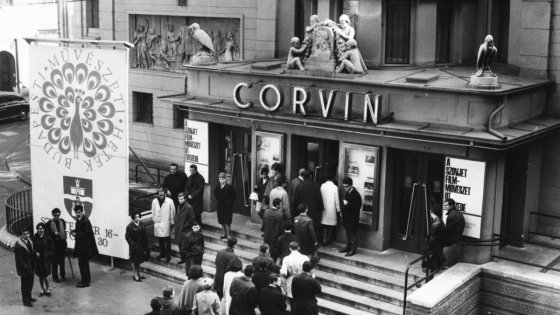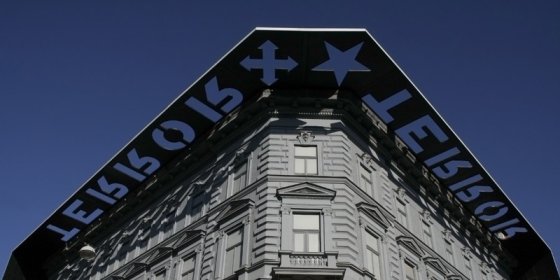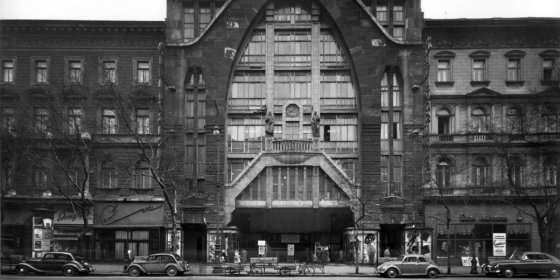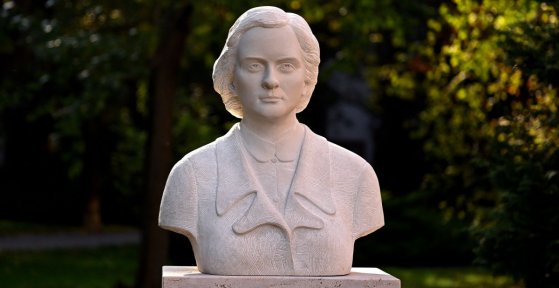 The „intertwined history” of the bridges and the city of Budapest
Which ideas and events have shaped the fate of bridges of Budapest and the cityscape? Alongside many other interesting facts, this question is also answered this newly published book by the Budapest City Archives, which introduces the history of bridges in Budapest.
The „intertwined history” of the bridges and the city of Budapest
Which ideas and events have shaped the fate of bridges of Budapest and the cityscape? Alongside many other interesting facts, this question is also answered this newly published book by the Budapest City Archives, which introduces the history of bridges in Budapest.
1956
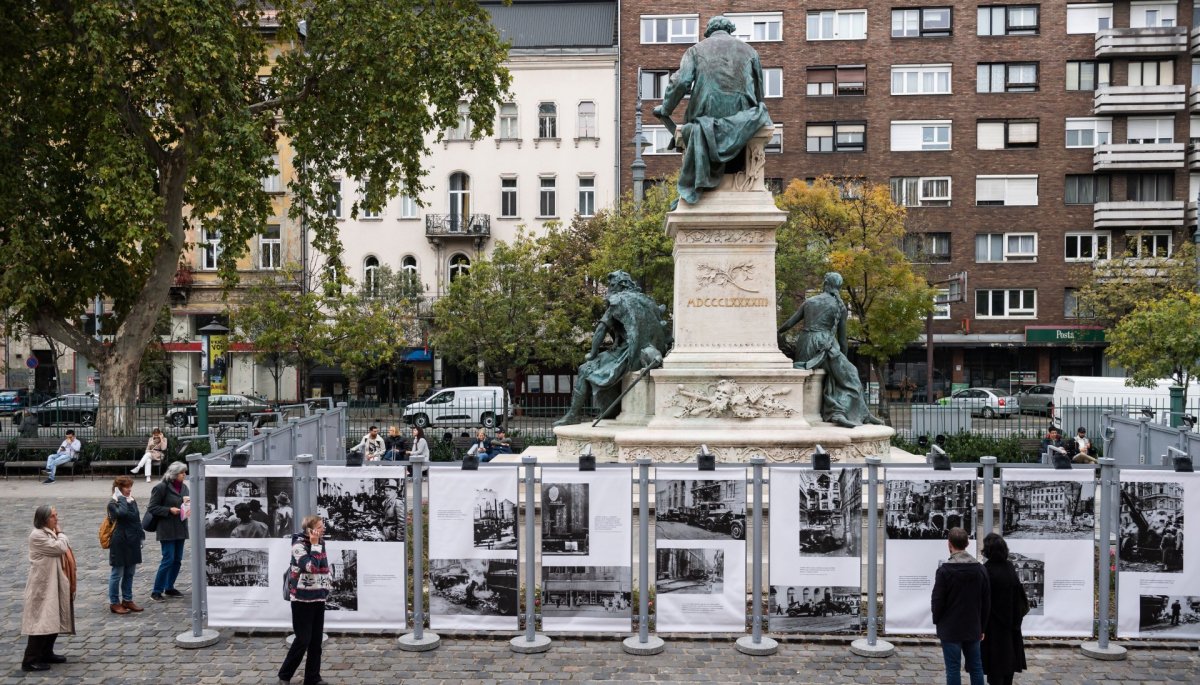 An open-air photo exhibition opened in the garden of the National Museum
An open-air photo exhibition opened in the garden of the National Museum
October 23, 2022 at 1:00 PM
An outdoor photo exhibition called "Hope and Drama - Hungary '56" opened in the Museum Garden. The exhibition, which can be visited until 27 November, commemorates the heroes of the 1956 revolution and the solidarity of the Polish people. The black-and-white pictures bring to life the events that took place on the streets of Budapest. The original photos were taken by an unknown Polish person.
Where the armed uprising began - The siege of Hungarian Radio on 23 October
October 23, 2022 at 9:00 AM
One of the symbolic locations of the 1956 revolution in the capital was the Hungarian Radio building on Bródy Sándor Street. It was here that the flame of freedom was ignited for the first time in Pest, which spread not only to significant areas of the capital, but also to many other parts of the country, and even to some settlements beyond the border. Pestbuda now revives what happened at the Radio in the recollections of those who themselves were there during the fighting or took part in the siege.
The wide-screen cinema in Pest is 65 years old: Corvin presented a Soviet film
September 12, 2022 at 2:00 PM
Today, it is natural that the screen in the cinema is huge, it can be up to 24 metres wide and 18 metres high, and you can watch movies with surround sound or in 3D. In the 1950s, however, it was different in Hungary, the screens in the cinema were only a few metres wide. The first wide-screen cinema was Corvin, damaged during the revolution and rebuilt in 1957.
Hundred thousand people at the opening, millions at the exhibition - The House of Terror Museum opened 20 years ago
February 24, 2022 at 11:00 AM
20 years ago, on the eve of Memorial Day for the Victims of Communism, the House of Terror, the former Arrow Cross and then Communist torture house, opened at 60 Andrássy Avenue. The interest was huge, almost a hundred thousand people appeared at the opening to get acquainted with two terrible periods of Hungarian history.
The Fashion Hall moved to Andrássy Avenue out of necessity - The store opened in its new location sixty-five years ago
January 2, 2022 at 3:00 PM
The Magyar Divatcsarnok [Hungarian Fashion Hall] moved from Rákóczi Road to Andrássy Avenue in 1957, to the former building of the Párisi Nagy Áruház [Párisi Department Store], which was nationalized after the war and used as a book storage. In the 1956 revolution, the store of the Fashion Hall at 72 Rákóczi Road was so damaged that a new location had to be found. The building on Andrássy Avenue was available, only 10 wagons of unsold books had to be disposed of.
One of the oldest ways of the cross in Budapest – The Kiscell Calvary is over 200 years old
April 3, 2021 at 11:00 AM
During the Easter period, people used to visit many calvaries, i.e. Ways of The Cross, in Buda and Pest. One of the oldest calvaries in the city, built 200 years ago and starting next to the Kiscelli Museum, is still one of the most visited Ways of The Cross in Budapest today. Even in 1956, the year of the revolution plenty of people walked the Way, as can be seen in a photo from 65 years ago.
Sixty-five years ago an earthquake shook Budapest
January 9, 2021 at 10:00 AM
Recent earthquakes in Croatia have caused more than 100 million HUF damage in Hungary, while some tremors have even been felt in Budapest. Earthquakes are not extremely common in the Carpathian Basin but do occur sporadically. One of the largest recorded tremors in Hungary, which also led to the loss of life, happened on the outskirts of Budapest 65 years ago, in January 1956.
Bust of Ilona Tóth unveiled in courtyard of Bajcsy-Zsilinszky Hospital
October 22, 2020 at 5:00 PM
Ilona Tóth was a final year medical student who was an extern during the 1956 revolution became a symbolic figure of the communist regime's retaliation for the revolution. A new bust commemorating her has been unveiled in the courtyard of the Bajcsy-Zsilinszky Clinic and Hospital in Kőbánya.
More articles
 The „intertwined history” of the bridges and the city of Budapest
Which ideas and events have shaped the fate of bridges of Budapest and the cityscape? Alongside many other interesting facts, this question is also answered this newly published book by the Budapest City Archives, which introduces the history of bridges in Budapest.
The „intertwined history” of the bridges and the city of Budapest
Which ideas and events have shaped the fate of bridges of Budapest and the cityscape? Alongside many other interesting facts, this question is also answered this newly published book by the Budapest City Archives, which introduces the history of bridges in Budapest.
 The Bridge Report, which brought a turning point in the history of Budapest
A travel report that changed the history of Pest and Buda, as well as Hungary. The little book contributed to the change of half a thousand years of legal customs and the implementation of an investment of unprecedented size and technical quality. This book was The Bridge Report [Hídjelentés in Hungarian].
The Bridge Report, which brought a turning point in the history of Budapest
A travel report that changed the history of Pest and Buda, as well as Hungary. The little book contributed to the change of half a thousand years of legal customs and the implementation of an investment of unprecedented size and technical quality. This book was The Bridge Report [Hídjelentés in Hungarian].
 Drama on the university wall - The heroic monument was planned 95 years ago
In the constant hustle and bustle of the Egyetem Square in Pest, the students may not even notice the monument that decorates the short section of wall between the church and the central building of ELTE. However, it commemorates their predecessors, the heroes who fought for their country in World War I, and those who heroically helped them. The first design of the dramatically collapsing soldier was born in 1928, ninety-five years ago.
Drama on the university wall - The heroic monument was planned 95 years ago
In the constant hustle and bustle of the Egyetem Square in Pest, the students may not even notice the monument that decorates the short section of wall between the church and the central building of ELTE. However, it commemorates their predecessors, the heroes who fought for their country in World War I, and those who heroically helped them. The first design of the dramatically collapsing soldier was born in 1928, ninety-five years ago.


